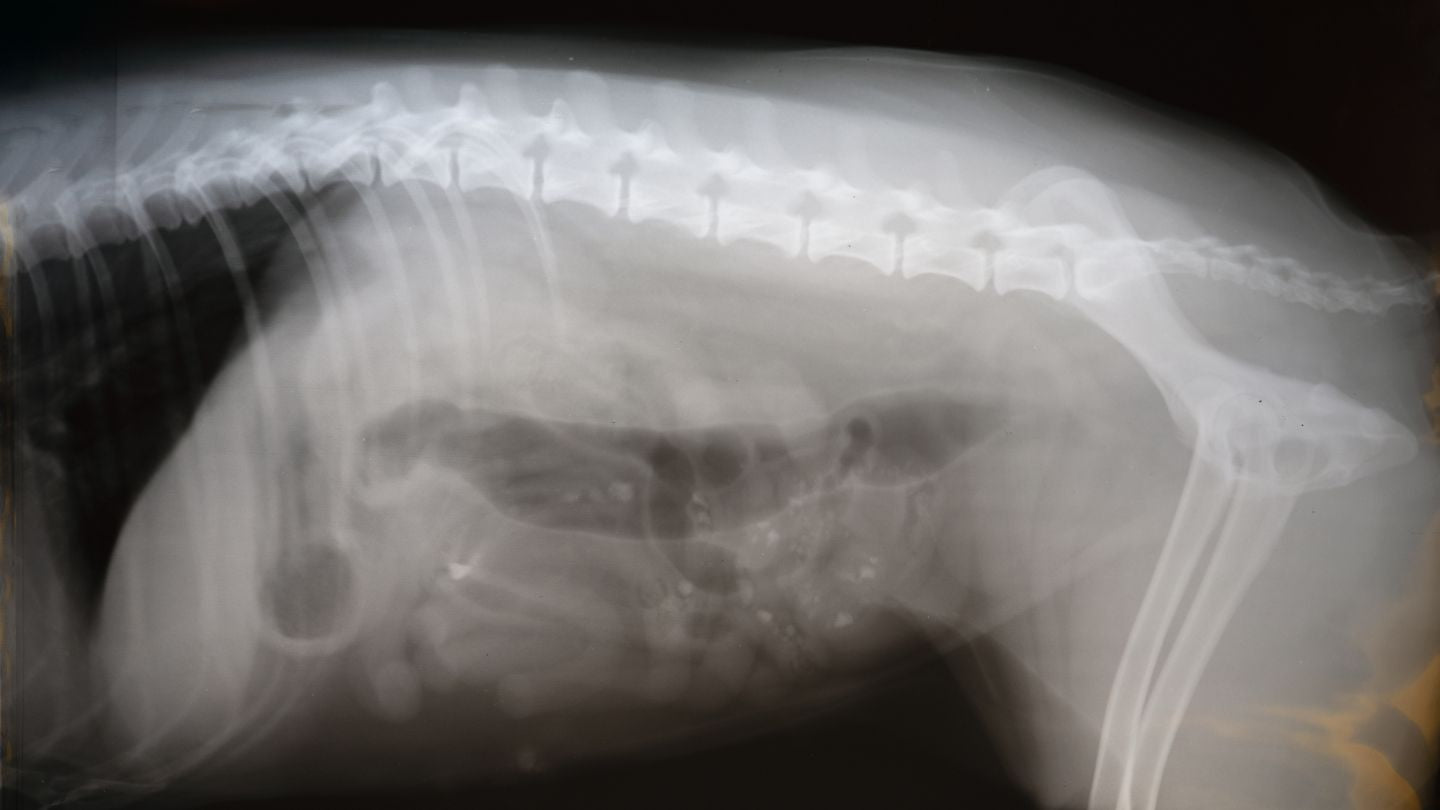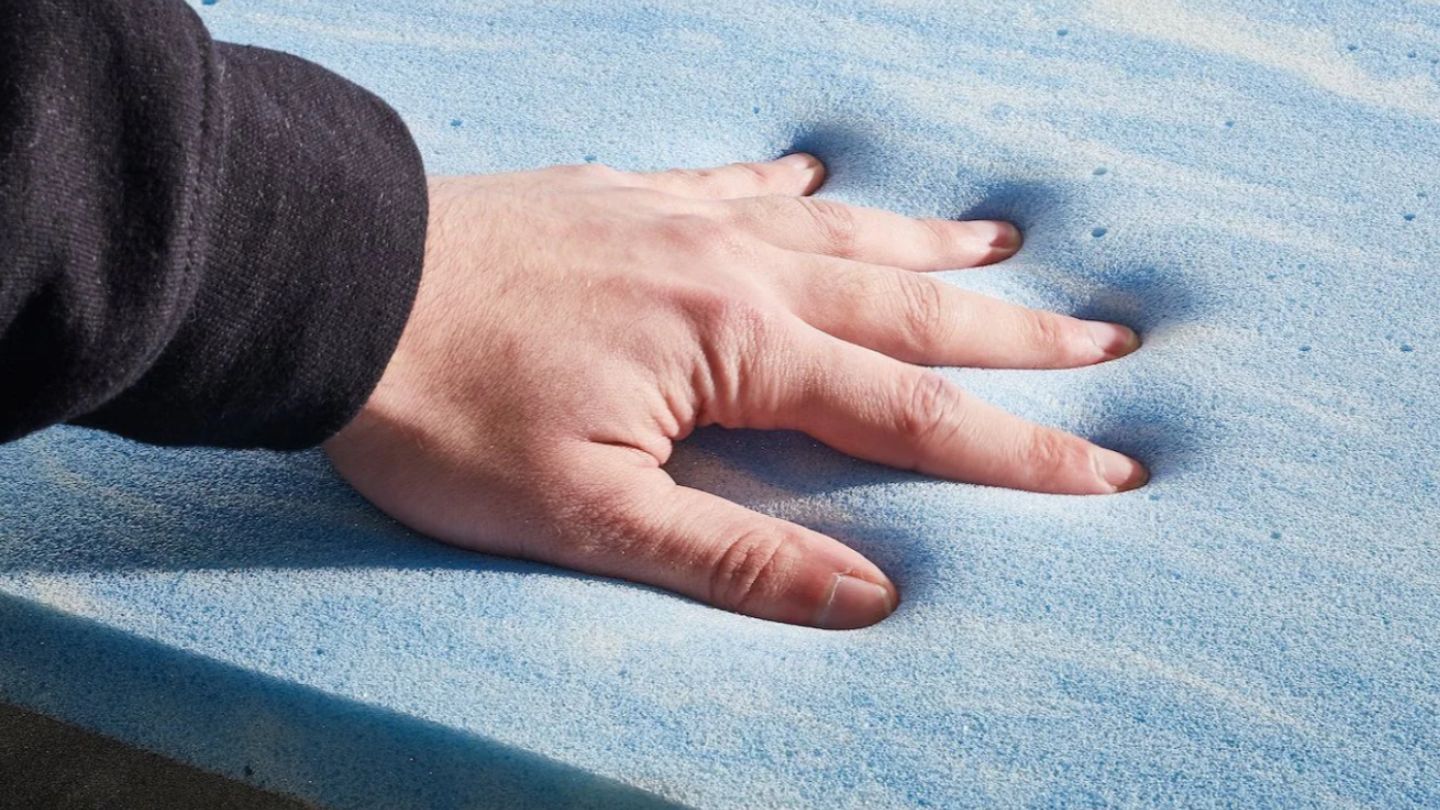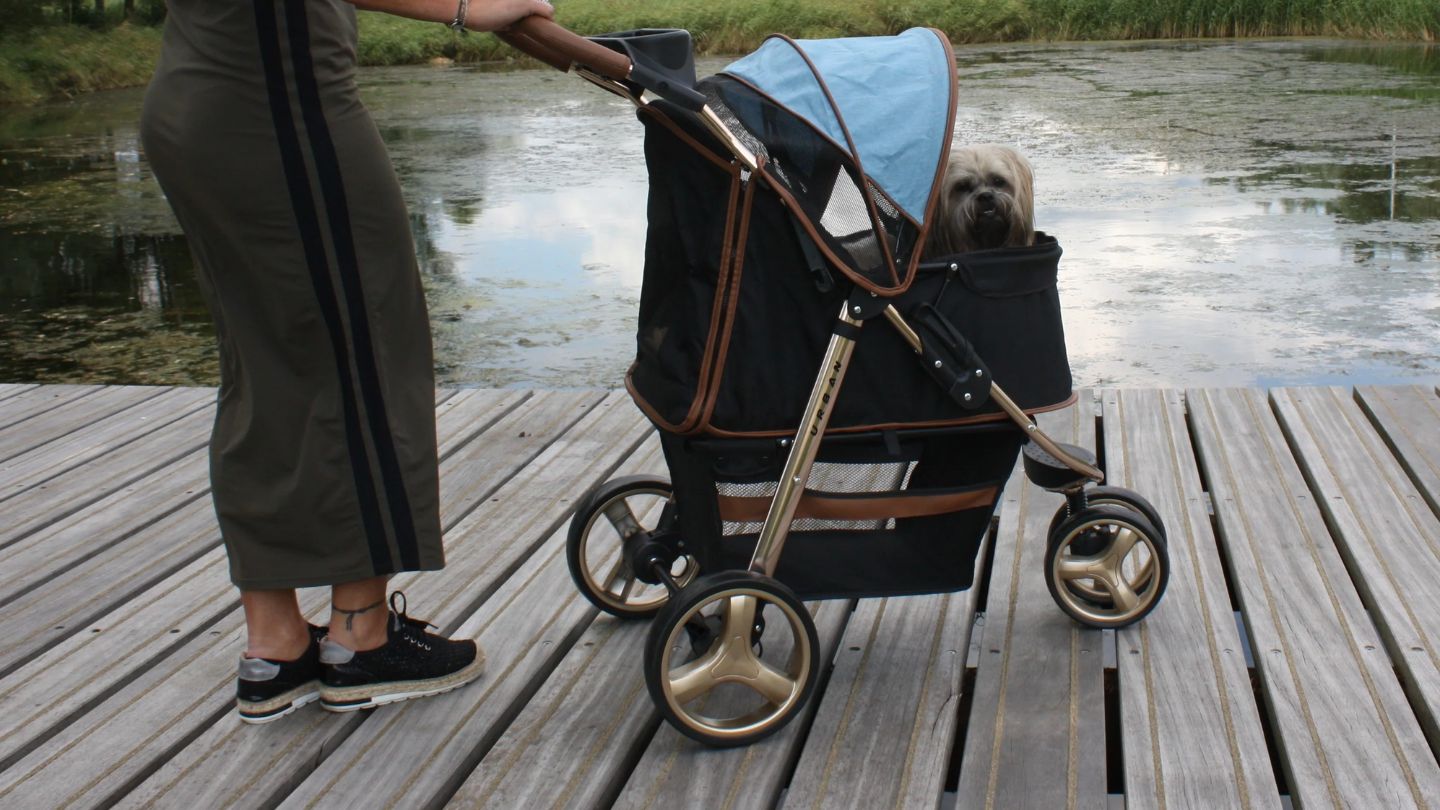The right kind of sleeping place can help reduce a dog's joint pain and improve its quality of life.
- Dr. Marty Becker
An orthopedic bed is no longer a luxury item just for humans, but it has also become an everyday aid for our four-legged friends. Lots of walking, running, jumping – our dogs lead active lives. And this active lifestyle can lead to damage to joints and bone tissues, which in turn leads to the development of arthritis or osteoarthritis. Fortunately, an orthopedic bed can be one of the most effective solutions to help dogs suffering from arthritis or osteoarthritis. In this article, you will find out how it can be helpful.

Different musculoskeletal diseases of the dog
Various musculoskeletal disorders can cause significant pain and a decline in quality of life for dogs. The most common musculoskeletal disorders in dogs are arthritis, which is often a result of osteoarthritis, and dysplasia, which refers to joint malformation. These diseases can develop due to various reasons, such as genetic factors, the dog's age, or obesity. They affect the dog's ability to move and can impair its overall well-being.
Osteoarthritis is a disease in which the cartilage tissue of the joints weakens and wears away, leading to joint pain and stiffness. Often, the development of osteoarthritis is long-term and can be caused by factors such as strain, obesity, or age-related changes. A dog suffering from osteoarthritis may move stiffly and avoid significant physical exertion. It is also common for the pet to spend more time resting or sleeping instead of being active. Unfortunately, there is no cure for osteoarthritis, but symptoms can be alleviated and quality of life improved with measures such as an orthopedic bed.
Arthritis, on the other hand, is a condition that can occur alongside osteoarthritis or as an independent disease. It means inflammation of the joint, which causes pain, swelling, and stiffness in the dog. Common causes of arthritis include joint injuries, infections, immune system diseases, or osteoarthritis. Dogs suffering from arthritis may exhibit a variety of symptoms such as reluctance to move, difficulty standing up, lethargy, or even fever. Just like osteoarthritis, unfortunately, arthritis cannot be completely cured, but its symptoms can be alleviated and quality of life improved with various treatments, such as using an orthopedic bed.
Dysplasia is another common joint disease that particularly affects large breed dogs. It is caused by a malformation of the joints, which leads to excessive wear and eventually arthritis or osteoarthritis. Dogs suffering from dysplasia may be reluctant to move, may limp, or have difficulty rising. Dysplasia is a hereditary disease, and its symptoms can be alleviated with regular exercise, weight management, and a comfortable resting place, such as an orthopedic bed.

How to Identify Musculoskeletal Disorders in Dogs
Musculoskeletal diseases can greatly affect your dog's quality of life, and therefore it is important to recognize these diseases early so that necessary treatments can be initiated. However, it should be noted that each dog is an individual, and not all have the same symptoms. Even dogs suffering from the same disease may behave differently. Here are the most common signs by which you can identify musculoskeletal diseases in your dog.
The first sign is usually when your dog starts moving more slowly than before or seems to have difficulty standing up. It may also be that the dog limps or avoids certain positions or movements. For example, dogs suffering from osteoarthritis may avoid jumping or climbing stairs because these activities might cause pain.
A dog's behavior can also change. It may be more irritable than before or it may withdraw into itself. Sometimes such behavioral changes can be due to pain associated with musculoskeletal disorders.
Changes in weight can also be a sign of illness. If your dog loses or gains weight rapidly without a clear reason, it may be because it is not moving as much as before or because it is eating more or less due to its pain.
The most important thing is to be attentive to your dog's symptoms and take them seriously. Do not ignore these signs, but take the dog to a veterinarian who can perform a more thorough examination and initiate treatment if necessary. Remember that timely treatment can significantly alleviate your dog's symptoms and improve its quality of life. Especially large breeds have a higher likelihood of developing musculoskeletal diseases during their lifetime.
| Dog breed | prevalence of musculoskeletal diseases |
|---|---|
| German Shepherd | Very high |
| Bernese Mountain Dog | Very high |
| Newfoundland dog | Very high |
| Labrador Retriever | High |
| Rottweiler | High |
| Golden Retriever | High |
examples of large dog breeds that have a high risk of hereditary musculoskeletal diseases
Now that we have discussed various canine joint diseases, it is important to talk about possible treatments and their significance for the dog's well-being. One way to support the treatment of a dog suffering from osteoarthritis or arthritis is the use of an orthopedic bed.
What is an orthopedic bed?
The orthopedic bed is specifically designed to support and alleviate pain in joints and muscles. They are typically made from high-quality memory foam that conforms to the dog's body shape and distributes weight evenly, minimizing pressure on specific points such as joints and bones.

See the selection of orthopedic beds.
The benefits of an orthopedic bed
The use of an orthopedic bed has many benefits for a dog with joint issues. Here are some of the most important ones:
- Weight Distribution: An orthopedic bed distributes pressure evenly across the entire mattress, which helps reduce pressure on joints and bones.
- Pain relief: Using an orthopedic bed can help alleviate the pain and discomfort caused by the dog's joint disease.
- Better rest: Alleviating significant pain in a dog can lead to better rest and sleep quality, which is extremely important for the dog's well-being and healing process.
An orthopedic bed can help reduce joint strain and inflammation, which alleviates the dog's pain and improves its mobility.
- Dr. Nancy Kay
However, remember that while an orthopedic bed can be a helpful support, it is not a substitute for the treatment or medication recommended by a veterinarian. It is always advisable to consult a veterinarian before starting any new treatment or supportive measure for your dog.
Research Results: The Impact of Orthopedic Beds on Dog Joint Problems
Continuing from the above context, many studies have shown that the use of orthopedic beds can be extremely beneficial in the treatment of joint diseases in dogs. A particularly good effect has been observed in dogs suffering from osteoarthritis or arthritis.
These studies have shown that an orthopedic bed provides optimal support for the dog's body, distributing weight evenly and thereby relieving pressure on the joints. This reduces joint strain and pain, helps improve blood circulation, and can even help reduce swelling and inflammation.
"An orthopedic bed not only creates a more comfortable sleeping environment for the dog, but also provides physiological benefits that can alleviate and even prevent the progression of joint diseases" - veterinarian
The effects of using beds are significant. Some dogs have shown remarkable improvements in their mobility and pain levels within just a few days of starting to use a new bed. It is also important that an orthopedic bed can increase the dog's comfort and well-being, which can lead to a better quality of life.
Orthopedic bed studies
As previously mentioned, the benefits of orthopedic beds have also been observed in scientific studies. Below are some of these studies:
- A study published in Veterinary Medicine: Research and Reports (2014) showed that the use of orthopedic beds significantly improved postoperative recovery time for dogs suffering from osteoarthritis.
- The study published in the Yearbook of Veterinary Medicine (2016) demonstrated that an orthopedic bed can significantly improve the quality of life for dogs awaiting or recovering from surgery.
- An article in the J Am Vet Med Assoc journal (2017) stated that orthopedic beds are an effective aid in the treatment of osteoarthritis; in addition to comfort, they can reduce inflammation and promote healing.
It is good to remember that every dog is an individual, and what works for one may not necessarily work for another. Therefore, it is important to consult with a veterinarian before purchasing a new bed for your pet suffering from joint issues.
The Impact of Sleep on a Dog's Joint Health
Sleep plays a significant role in maintaining the health of a dog's joints. Sleeping allows the body to recover from the day's physical activities and promotes the regeneration of tissues and joints. These recovery processes are especially important for dogs with joint issues, who need optimal recovery time to reduce pain and inflammation as well as to maintain joint mobility and functionality.
The lack of regular, quality sleep can lead to pain sensitivity and reduced functionality, which can exacerbate existing joint diseases. A dog should be able to sleep peacefully in a comfortable bed that supports the body and helps reduce pressure on the joints.
The role of an orthopedic bed in improving the quality of a dog's sleep
An orthopedic bed is an excellent choice for a dog with joint disease or arthritis. They provide excellent support and comfort, which helps reduce pressure and pain in the joints.
- Conforms to the body: The memory foams of the orthopedic bed adapt to the shape of the dog's body and distribute pressure evenly, which reduces strain and pain in the joints.
- Weight Distribution: An orthopedic bed distributes the dog's weight evenly, preventing pressure points and helping to keep the joints healthy.
- Warm and comfortable: The orthopedic bed provides warmth and comfort, which can help alleviate joint pain and facilitate rest.
Unlike regular pet beds, orthopedic beds are specifically designed to support and adapt to the shape and needs of a dog's body. These features together can help improve the quality of a dog's sleep and promote joint health.

How does an orthopedic bed improve a dog's sleep quality
It is important to understand that the quality of a dog's sleep is connected to its overall health and quality of life. A well-sleeping dog is more alert and happier, and it can better handle physical challenges such as arthritis or osteoarthritis. An orthopedic bed is an excellent tool for improving such sleep quality.
The comfort of orthopedic beds
Orthopedic beds are designed to support the dog's body appropriately, without forgetting comfort. They conform to the dog's body, which helps distribute weight more evenly and reduce pressure on the joints. This is especially important for dogs with osteoarthritis or other joint diseases. An orthopedic bed can even help alleviate existing joint pain and significantly improve the dog's sleep quality.
Optimized temperature conditions
Orthopedic beds keep the dog warm in cold weather and cool in warm weather, which helps maintain an ideal body temperature and prevent excessive heat that could harm the joints.
Improved mobility
Good sleep can improve a dog's mobility and vitality. During sleep, the body repairs itself, including the joints. An orthopedic bed can enhance this repair process by providing optimal support and comfort.
Ensure that you choose a bed suitable for the size of the dog, which supports it in the right places, especially if the dog suffers from arthritis or osteoarthritis. The more comfortable the dog is, the better it sleeps and the better its quality of life.
How to choose a suitable orthopedic bed for a dog
When choosing an orthopedic bed for your dog, it is important to consider a few factors to ensure that the bed will be as beneficial and comfortable as possible for your dog.
- Size: The size of your dog is one of the most important factors you need to consider. The bed should not be too small so that the dog's skeleton gets the necessary support and your dog can comfortably rest in all positions. If you choose a bed that is too large, your dog may feel uncomfortable and insecure.
- Material: An orthopedic bed should be made of durable and high-quality material that is also easy to clean. High-quality orthopedic beds are made from materials such as viscoelastic, which conform to the dog's body heat and weight. You can read more about the materials in this article.
- Support: Since the purpose of an orthopedic bed is to support the joints in the legs, hips, or back, the bed should provide adequate support for these areas. Some orthopedic beds like Labonin Ortho beds are specifically designed to alleviate certain joint problems, so choosing them might be a good idea if your dog has been diagnosed with such a condition.
- Accessories: if your dog is a senior, or suffers from incontinence, it is good to ensure that the mattress can be equipped with a separate incontinence protector such as Laboni's CoolPlus.

An example of a gel-based orthopedic dog mattress that combines quick-recovery gel and a memory foam layer.
When the bed is chosen
When you have finally chosen an orthopedic bed for your dog, remember to gradually acclimate your dog to the bed. Give it the opportunity to get used to its new bed and make it as comfortable a place as possible. For example, you can place its favorite toy or blanket in the new bed.
It is important to keep in mind that every dog is an individual, and what works for one dog may not necessarily work for another. Closely monitor your dog's reaction to the new bed and contact a veterinarian if you need further advice.
Remember that an orthopedic bed should not be seen as the only solution to your dog's joint problems. It is one of many ways to improve your dog's quality of life and support its treatment.
Other ways to alleviate joint problems
In addition to the orthopedic bed, there are many other treatments available to address a dog's joint problems.
Exercise is an important part of preventing musculoskeletal diseases, but at some point, it can become difficult or too painful. In such cases, help and joyful outdoor activities can be sought with pet strollers. With these, walks can be extended or even completely replaced, allowing the dog to enjoy a wider territory without pain from strain.

Especially as physical activity decreases, it is important to pay attention to the amount of nutrition and weight management, as being overweight has a significant impact on joint strain.
Medical treatment includes, for example, anti-inflammatory drugs and supplements that can be used to alleviate joint pain and support joint function. Physiotherapy or animal physiotherapy, on the other hand, can help your dog relieve pain and improve its mobility. Rehabilitation, such as hydrotherapy, can also support the health and functionality of your dog's joints.
Remember to consult with your veterinarian before starting a new treatment plan. They can help you choose the best possible care based on your dog's unique needs. After all, your dog's well-being and health are the most important.
At Muotitassu, we want to help your dog feel better. Check out our selection of orthopedic beds and pet strollers.









